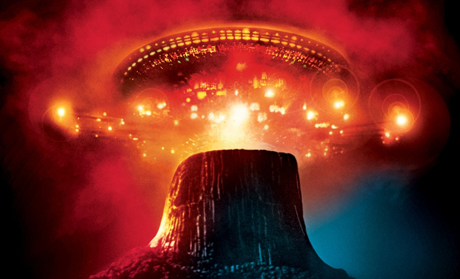[ted id=1524 width=560 height=315]
Most people get into visual effects for the explosions. But not Robert Legato, the visual effects supervisor of Avatar and The Aviator, who also won Oscars for his work on Titanic and Hugo.
“Everything I end up liking is outrageously simple,” Robert tells the TED Blog.
In this thrilling talk given at TEDGlobal 2012, Legato shares how he created the launch scene of Apollo 13 “in a parking lot with a tin can … and fire extinguishers.”
“If you believed any of the stuff that I just showed you, what you were emoting to is something that’s a total falsehood,” Robert says in the talk. “I find that really kind of fascinating.”
In his talk, Robert also describes creating effects for Titanic, which made use of real footage of the ruins of the ill-fated ship along with effects filling in the gaps. He also shows how he created the scene in Hugo where Sacha Baron Cohen’s leg brace gets caught on a train, by moving the platform rather than the train itself.
Robert tells the TED Blog that he loves the challenge of creating effects based on historical moments, partly because they give him a sense of being connected to people in the past.
“Shooting Titanic, it was a creepy feeling to look through the camera, tune out all the things happening on set, and see people diving off the ship into the water to save their lives. It’s something that only our crew and the people on the Titanic saw that day in real life,” Robert says, adding that he felt something similar while filming the scene in Apollo 13 where the astronauts’ capsule parachutes to safety. “Only a couple people on the planet have witnessed the live image of a Saturn 5 capsule in the eyepiece of their cameras and photographed it splashing down.”
Robert is continuing his tradition of amplifying historical moments. He is currently on location in New York, preparing to shoot The Wolf of Wall Street with Leonardo DiCaprio and Martin Scorsese. But Robert still took a few minutes to share with you the five movies whose visual effects floored him … in their simplicity.
On 2001: A Space Odyssey (1968): “I was just amazed by how beautiful it looked,” says Robert.
On The Godfather (1972): “It was the first time I saw the artform of movies — the perfect blending of the art direction, the cinematography, music, acting, directing, editing and everything else.”
On Close Encounters of the Third Kind (1977): “I wasn’t interested in visual effects work then, but I saw it and I thought, ‘Holy …’ I knew I was seeing something that couldn’t be seen anywhere else but in the cinema.”
On Blade Runner (1982): “The beauty of Blade Runner is amazing. It’s simple — a model with a bunch of lights shot in smoke. I knew I wanted to do stuff that looked like that.”
On Forrest Gump (1994): “I was amazed by the simplicity of one sequence — Forrest Gump playing ping pong. It made me believe that Tom Hanks was a champion ping pong player. I asked ‘How did [Tom] do that?’ not ‘How did they do that?’ It’s pedestrian stuff especially these days — computer animating a ball as [Tom] swung the paddle to a metronome — but it made me totally suspend disbelief. It was such an elegant use of the medium.”





Comments (16)
Pingback: The making of movie magic | Floating Pens
Pingback: An Oscar-winning visual effects supervisor picks the 5 movies that floored him visually | TED Blog | artsy sciency intrigue
Pingback: 8 talks about the making of movie magic | Krantenkoppen Tech
Pingback: Rob Legato - The Art of Creating Awe - wongbrotherdesigns.com
Pingback: News & Things: The Other… Stuff | Rebecca's Corner
Pingback: Flavorwire » What’s On at Flavorpill: The Links That Made the Rounds in Our Office
Pingback: Emotion of Visual Effects | Gathering Moss while Wandering
Pingback: An Oscar-winning visual effects supervisor picks the 5 movies that floored him visually « Follow Me Here…
Pingback: teddy « mirmurr